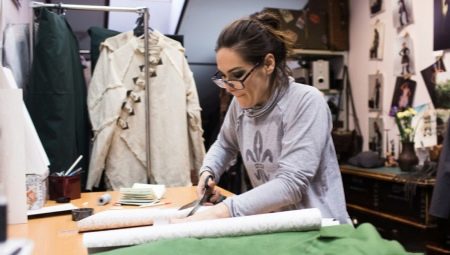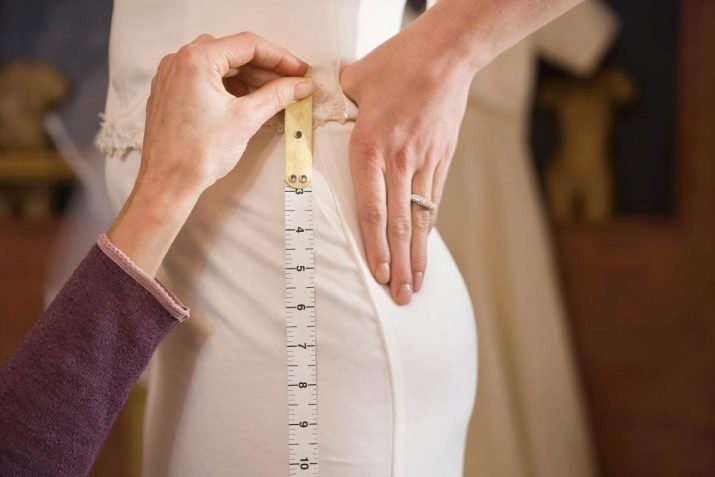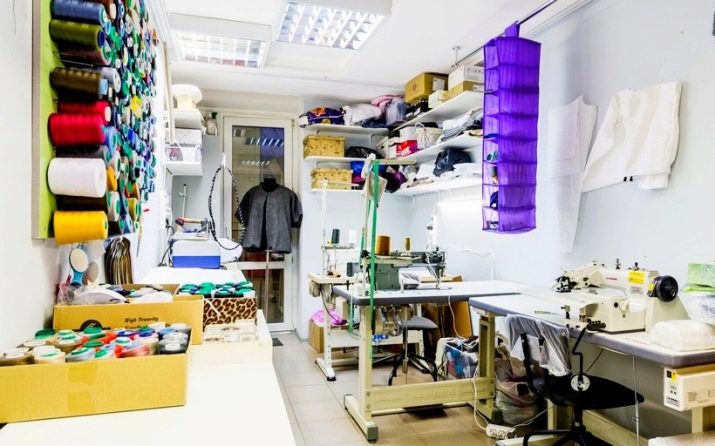Who is a tailor and how is he different from a seamstress?

Currently, a huge number of clothes, shoes and accessories are presented on store shelves. One or another wardrobe item can be easily purchased at one of the many trading platforms selling multi-brand items.
But despite the huge selection of mass-produced wardrobe items, there are always those consumers who purchase tailor-made clothes.
Who is that?
Sewing clothes, shoes, bags and other accessories, made according to individual patterns and sizes, are carried out by specialists whose profession is called "tailor".
If you take into account a brief description of this profession, then A tailor is a craftsman engaged in the manufacture of a particular wardrobe item, from choosing a model, selecting material, taking measurements, and ending with sewing, finishing and fitting to the figure. This is a person who is fluent and knows all the stages of sewing clothes.
Most often, such a master does not perform mass tailoring of a particular model. All items made by the tailor are exclusive.

Pros and cons of the profession
Like any other profession associated with the production of consumer goods, the profession of a tailor is very useful to society. Some people who wish to have clothing made to their liking for fashion in their wardrobe may seek help from a tailor who will create the necessary thing.
There are also situations when a person with a non-standard figure cannot find the necessary clothes in the store. In this case a tailor will come to the rescue and sew clothes that fit perfectly on the figure... Or he will customize the existing model for the required parameters.
Therefore, the profession of a tailor has not lost its relevance for several centuries. However, the job is considered both interesting and challenging. The main positive characteristics of the profession include:
- high level of income;
- optional higher education;
- the ability to work from home;
- free work schedule;
- the possibility of self-development and the acquisition of additional skills;
- the opportunity to work as an individual entrepreneur;
- relevance and relevance in any country, regardless of the season.

But along with a number of indisputable advantages, the work of a tailor has negative sides and limitations:
- heavy load on the organs of vision, back, neck;
- the need to spend most of the working day in a seated position;
- the need to acquire initial skills and work experience before direct employment;
- limitation of activity due to eye disease, impaired motor activity of the upper limbs, neurological problems.
Therefore, physically healthy, active people capable of painstaking work in difficult conditions are suitable for such work.

How is it different from a seamstress?
The tailoring profession has many narrow specializations. People with an identical education can only work with certain types of fabrics, perform only a few operations from the entire manufacturing process of the product. However, there is still a difference between the more common seamstress job and the tailoring profession. The most significant differences include:
- seamstresses work in mass production, and a tailor works in an atelier or in his own workshop;
- the seamstress performs only those operations that are related to sewing, and the tailor can perform all the steps in the manufacture of the product;
- a seamstress's work is associated only with making high-quality stitches, while a tailor is more associated with the development and modeling of wardrobe items, decorating or repairing clothes.

Discharges
The tailor profession has 6 ranks. An increase in the already existing category is always associated with additional training, retraining and the acquisition of additional skills and abilities.
- Tailor 2 category... This category is most often assigned to those who have just got a job, or young professionals. A second-class tailor is engaged in the installation of accessories and the repair of clothes made from natural fabrics.
- Tailor 3 category... A specialist with this level of professional training can make products according to individual measurements.
- Tailor of the 4th category. A person with such a skill level can sew clothes both by hand and using sewing machines. Can model and sew bed linen, overalls.
- 5th grade tailor... In addition to tailoring according to individual measurements, a specialist with this qualification can manufacture and repair outerwear, overalls, suits, trousers.
- Tailor of the 6th grade. Such a specialist has the skills to work with coats, suits, natural fur products.
- Tailor grade 7... It can carry out all types of operations related to sewing and repairing all types of clothing. And also has the right to work with all types of fabrics, such as natural, synthetic, blended.
Increasing the grade is an integral part of the labor activity of such a specialist.

What is he doing?
The application of the skills and abilities of the tailor depends on from his place of work. If a person who owns this profession has his own workshop, then the types of operations related to the manufacture of a particular piece of clothing are chosen by the tailor himself.
When it comes to small workshop, then the tailor is independently engaged in all stages of the manufacture of a particular thing. If the workshop has a large customer base and in its staff, in addition to the tailor, there are other employees, then, as a rule, the tailor is involved in choosing a model, material, taking measurements, fitting to a figure, while a cutter is engaged in patterns and cutting of a product, and a seamstress sews it off.
If a tailor is employed in an atelier or is listed in a garment factory, then the list of his rights and obligations is fully displayed in the job description.

Requirements
Because Since the tailor's profession involves the performance of a large number of operations, when applying for a job, rather high requirements are imposed on the applicant. When it comes to mass production clothing and employment in an atelier or a garment factory, then, in addition to a diploma of graduation from the relevant educational institution, the candidate will be required to have work experience for a period of 1.5 to 3 years.
When it comes to creating own business and workshop opening, then potential customers will also be interested in the work of only an experienced craftsman with positive reviews and examples of finished products.
Personal qualities
Since the work of a dressmaker is associated with constant communication with clients or customers, then, in addition to excellent professional qualities, from such an employee extraordinary personal characteristics will be required.
The key to successful work and close contact with customers is the mandatory presence of the following qualities:
- attentiveness to the wishes of the customer when modeling the product;
- accuracy in the manufacture of products in order to avoid damage to material and technology;
- the ability to achieve the assigned tasks;
- perseverance;
- readiness for painstaking and monotonous work;
- stress tolerance;
- sociability.
The presence of all these qualities will help to create a trusting relationship between the contractor and the customer, which will lead the work to a positive result for each party.

Knowledge and skills
Even with the right education, a tailor should always improve oneself and follow fashion trends continuously. In addition to his subtle artistic taste, such a master will certainly must have certain skills, which will be the key to its successful work. Any good tailor should own:
- cutting, sewing, seam processing, fittings installation technicians;
- tools, machines, devices used when sewing wardrobe items;
- rules for labeling, packaging, storage of finished products;
- methods of cleaning and caring for various types of fabrics;
- rules for working with reporting documentation.
Perfect mastery of all of the above techniques can help establish a high level of skill and professional qualifications for a specialist.

Place of work and working conditions
Specialists of such a profile as a tailor are in demand and highly valued in the labor market. Therefore, there will be a large number of options for employing a specialist with sufficient work experience and qualifications. These can be ateliers, workshops for sewing and repairing men's, women's or children's clothing, as well as manufacturing enterprises engaged in the manufacture of clothing or accessories, or garment factories.
In addition, such specialists are valued in educational institutions where they are hired as teachers. Also, starting your own business or fulfilling individual orders for a house can be a good option.

Training and professional development
You can learn such a profession in one of the many institutions secondary vocational education. There are colleges and technical schools that train specialists in this field in many cities.
However, in the profession of a tailor, no less special education is valued. professional skills and abilities. Therefore, most of the training time, future specialists are engaged in passing production practice at operating enterprises. In the course of such training, they adopt the secrets of the profession from experienced workers and learn the skills of craftsmanship in order to become professionals in their field.
In addition, for workers whose professional activities are related to the modeling and sewing of clothes, there are various retraining courses.
After completing such a course, the master is issued a diploma or certificate of completion of training and mastering a particular skill.

The salary
The tailoring profession is quite in demand in the job market. Therefore, the salary of such a specialist is at a high level. A beginner specialist with work experience and working in an atelier or in production can count on a remuneration of about 40 thousand rubles. This salary level will grow along with work experience and qualifications. So, the earnings of an experienced master of the 7th grade can reach 100 thousand rubles.
In the event that we are talking about work in our own workshop or in the execution of individual orders, then the prices for the finished work can reach several hundred thousand rubles. Everything will depend on the complexity of a particular order, the material of manufacture, the accessories used, as well as the timing of its execution.
Thus, the profession of a tailor is in demand and highly paid in the modern labor market.
However, a specialist working in this field must not only perfectly apply all skills and abilities, but also have a developed aesthetic taste, as well as follow fashion trends and constantly improve his qualifications.









